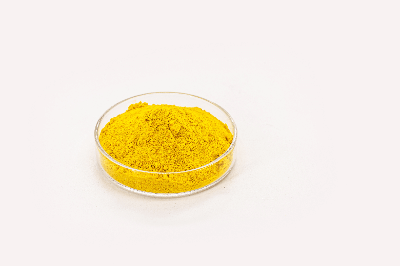What Are Photocatalysts?
 Photocatalysts are substances that use the energy of light to promote chemical reactions.
Photocatalysts are substances that use the energy of light to promote chemical reactions.
Photocatalysts were developed in Japan in 1967, when Akira Fujishima, a graduate student at the University of Tokyo, discovered that bubbles appeared when light was shone on a titanium dioxide electrode in water. Titanium dioxide (TiO2), which has an anatase crystal structure, is the most widely used photocatalyst, but when it was first developed, it worked only with short-wavelength ultraviolet light.
However, as a result of efforts by the government and companies, highly efficient photocatalysts that can work even with visible light are now being developed one after another, partly because this is a purely domestic technology with a wide market for application.
Applications of Photocatalysts
Photocatalysts can decompose organic pollutants as long as they have light energy. Since it exhibits superhydrophilic properties, it has applications in a wide range of fields that take advantage of its characteristics.
1. Antifouling and Self-Cleaning
There are many practical applications as a coating agent for building materials, such as tiles and glass. In outdoor areas exposed to sunlight, the use of this product on building exterior walls, window glass, traffic signs, signboards, etc., demonstrates its self-cleaning effect and disinfecting, antibacterial, and anti-fogging effects.
2. Removal of Airborne Toxic Substances
Indoors, in combination with ultraviolet lamps, it is used in air purifiers, deodorizers, and air conditioner filters. In addition, visible light-responsive Photocatalysts can be used on interior walls and doors of houses to provide antibacterial and deodorizing effects and help prevent sick building syndrome.
3. Others
Including those under research and development, photocatalysts are also used for purification of drinking water, purification of water storage tanks, purification of air and lakes, wastewater treatment, soil decontamination, and artificial photosynthesis (water decomposition to produce hydrogen and oxygen).
Principle of Photocatalysts
Photocatalysts exposed to ultraviolet light have oxidative properties that oxidize and decompose organic matter and superhydrophilic properties that do not repel water at all. In fact, researchers do not have a unified view on the mechanism by which photocatalysts perform these functions, especially on the mechanism of generation of hydroxyl radicals as described below. Therefore, here we summarize the explanations that are widely and generally accepted.
1. Generation of Reactive Oxygen Species
When photocatalysts are exposed to light energy, the inside of the crystal enters a high-energy state and electrons on the crystal surface are temporarily moved away from the crystal structure. These electrons are negatively charged, and the holes (holes) from which the electrons leave are positively charged, both being highly unstable and reactive.
Therefore, when the electrons combine with oxygen in the air, they form O2- (superoxide ion), and when the holes extract electrons from water touching the catalyst surface they form -OH (hydroxyl radical).
2. Oxidizing Action
O2- and -OH are both called reactive oxygen species, and they react with organic substances that come in contact with the catalyst surface to oxidize and decompose them. Photocatalysts accelerate the oxidation reaction by converting oxygen and water into reactive oxygen species, but they do not participate in the reaction and are not consumed themselves. Thus, photocatalysts are semi-permanently effective.
3. Antifouling Effect by Superhydrophilicity
It is believed that active oxygen decomposes microscopic hydrophobic organic matter adsorbed on the surface of photocatalysts, and at the same time, the surface of the catalyst is covered with hydroxyl groups (-OH), resulting in the superhydrophilic property. In addition, a film of water penetrates between the titanium dioxide and the dirt, making it easier to remove large stains.
Types of Photocatalysts
The most common photocatalysts today are based on titanium dioxide or tungsten trioxide. Titanium dioxide has been used in many photocatalytic products because it is physically and chemically stable and relatively inexpensive, but it initially had problems such as being able to use only ultraviolet energy.
Tungsten trioxide photocatalysts were developed to solve this problem. Currently, many products with unique innovations are available for both types of photocatalysts.
1. Visible Light Responsive Photocatalysts
In terms of the proportion of energy within sunlight, ultraviolet light will only account for only about 3% and visible light for about 50%. Visible light responsive photocatalysts were developed to utilize the enormous amount of visible light energy.
Various types of visible light responsive photocatalysis are now commercialized, including those with trace amounts of nitrogen or metal mixed into the crystal structure of titanium dioxide or tungsten trioxide, and those with metal or metal oxides attached to their surfaces.
2. Photocatalysts That Do Not Damage the Object to Be Protected
The higher the performance of a photocatalyst, the less likely it is to be used in direct contact with materials that are susceptible to oxidative degradation, such as organic fibers. To solve this problem, photocatalysts that are combined with apatite so that titanium dioxide does not come into direct contact with the material, and bonding materials that cover the surface of the organic base material so that it does not come into direct contact with the photocatalyst, are being commercialized.